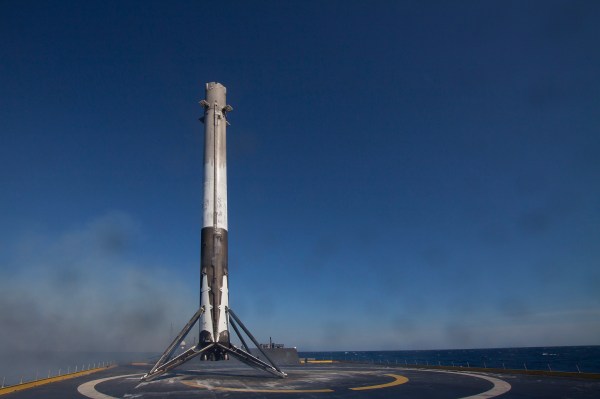SpaceX is set to launch its next Falcon 9 rocket on Thursday, March 30 for SES-10, a mission for a private communications satellite company. This is different from every Falcon 9 launch that has preceded it, because the rocket SpaceX is using has already flown once before – on April 8 last year, when it was the first of the company’s rockets to nail a landing at sea on a floating drone barge repurposed as a mobile landing pad.
Re-using a rocket is a huge milestone for SpaceX, one that will basically prove the viability of the business strategy underpinning its very existence and which could very well have a huge impact on the overall direction of the private space industry. SpaceX’s entire concept is centered around reusable rocketry, a key ingredient in helping it lower the cost of its launches over time. Reusability will make possible the necessary financial realities outlined by Elon Musk last year when he described SpaceX’s plan to get to Mars, and will help the company continue to undercut competitors for commercial launches while still making money in the process.
There are some caveats to what exactly SpaceX is doing in terms of “firsts.” Jeff Bezos’ Blue Origin has already reused rockets, for instance, but it has only done so with suborbital flights, and even then only for testing purposes. SpaceX will be launching a payload into orbit, and it will be doing so for a commercial, paying customer during an active mission. NASA, too, has reused rocket boosters for launching shuttles in the past, but these used solid boosters instead of ones with liquid fuel, and costs ended up being prohibitive regardless.
SpaceX thinks it can make the math work in its favor in terms of the costs of refurbishing and redeploying rockets, and that could eventually lead to a discount for customers willing to take advantage of ‘pre-loved’ rockets. But all of the positive economics and long-term benefits of rocket re-use come later – first, SpaceX has to get the first one successfully off the ground and back into space.
The launch is currently set for March 30, with a launch window opening at 6:27 PM EDT (3:27 PM PTD). We’ll be watching and covering live, so tune in to see how this Falcon 9 fares on its historic second kick at the orbital can.
